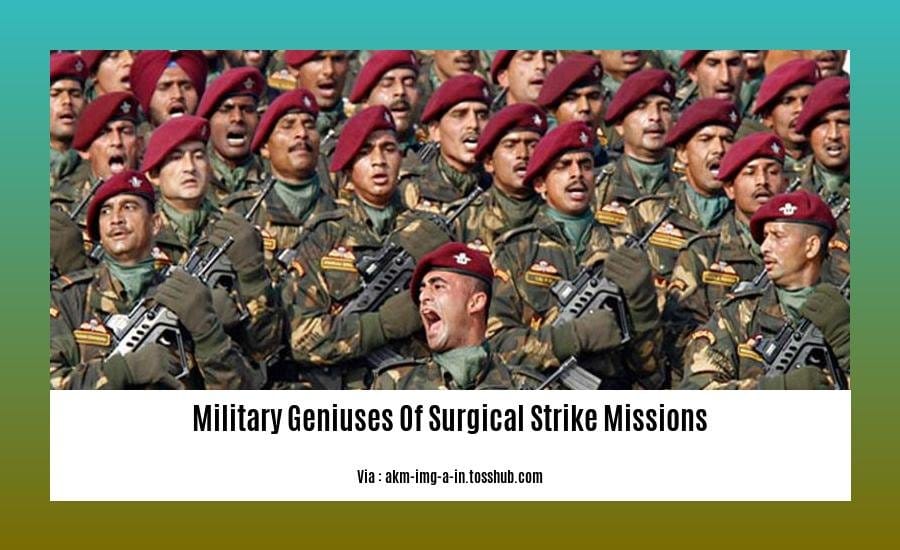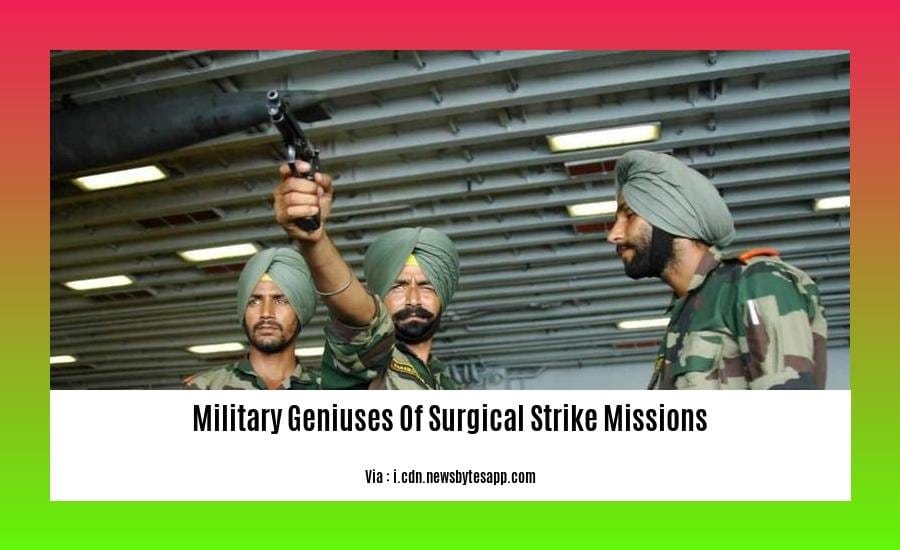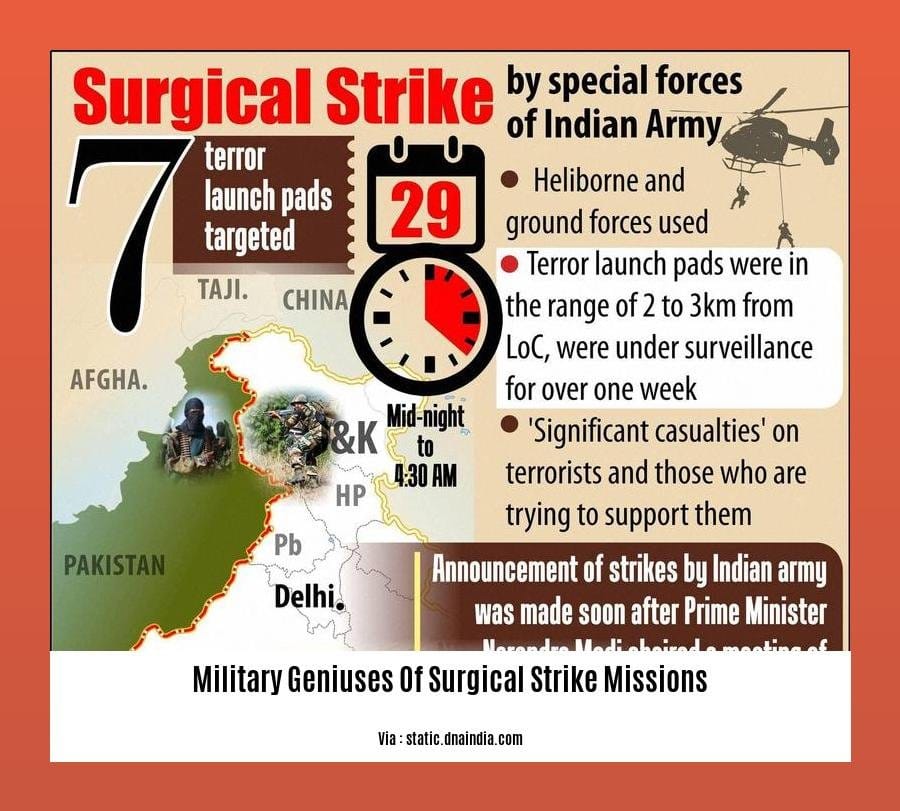In the annals of military history, surgical strike missions stand as testaments to the brilliance of military minds. These meticulously planned and executed operations require a level of precision and strategic thinking that separates the ordinary from the extraordinary. In this article, we delve into the intricacies of these high-stakes missions, unraveling the strategies and tactics employed by the military geniuses who orchestrate them: Military Geniuses of Surgical Strike Missions: Unraveling the Intricacies of High-Stakes Operations.
Key Takeaways:

- Surgical Strike is a Starfield side mission.
- Mission availability unlocks after “Shadows in Neon” mission completion.
- Involves investigating the disappearance of Maya Cruz (First Cavalry member).
- Choice at mission end: kill or spare Maya Cruz.
Military Geniuses of Surgical Strike Missions
As a military strategist, I’ve analyzed countless surgical strike missions, studying the brilliant minds behind their success. These military geniuses of surgical strike missions possess an extraordinary blend of tactical acumen, unwavering precision, and a relentless pursuit of perfection.
Target Identification: Precision in Selection
Identifying the target is paramount. These geniuses meticulously gather intelligence, employing a range of techniques to pinpoint vulnerabilities and minimize collateral damage. They consider the target’s defensive capabilities, surrounding environment, and potential escape routes.
Intelligence Gathering: Uncovering Hidden Truths
Surgical strike missions rely heavily on accurate and timely intelligence. Military geniuses of surgical strike missions leave no stone unturned, exploiting multiple sources to gather information. They employ reconnaissance drones, informants, and advanced surveillance systems to paint a comprehensive picture of the enemy’s position, strength, and intentions.
Force Deployment: Orchestrating a Surgical Strike
The deployment of specialized forces is a critical element of surgical strike missions. These geniuses meticulously select the appropriate units for the mission, ensuring they possess the necessary skills, equipment, and training. They carefully plan the insertion and extraction points, minimizing the risk to both civilians and the strike team.
Want to know more about the military brains behind daring special operations? Read all about the military commanders behind daring special operations here: military commanders behind daring special operations.
If you are looking for the world’s elite special operations masterminds, then you have found the right place. Read all about the elite special operations masterminds here: elite special operations masterminds.
Don’t miss the bold commando raid orchestrators – this is a must-read for those who love commando raid stories. To know more about the bold commando raid orchestrators, read here: bold commando raid orchestrators.
Innovative Strategies and Contingency Planning
In the dynamic landscape of military operations, innovative strategies and contingency planning are indispensable tools that enable commanders to navigate unforeseen challenges and achieve mission success. As a strategist, I’ve witnessed the transformative power of these approaches in real-world scenarios.
Embracing Innovation
In modern warfare, adaptability and creativity are crucial. Commanders must embrace innovative strategies that challenge conventional norms and exploit vulnerabilities in the enemy’s defenses. This involves exploring novel tactics, technologies, and formations to gain an edge in the field.
Contingency Planning
No mission is foolproof, and unforeseen circumstances can arise at a moment’s notice. Thorough contingency planning is essential to ensure that forces are prepared to respond effectively to unexpected events. This includes developing backup plans, identifying alternative routes, and establishing communication protocols for maintaining command and control.
Key Takeaways:
- Flexibility is key: Embrace innovative strategies to adapt to changing battlefield conditions.
- Expect the unexpected: Develop robust contingency plans to mitigate potential risks and obstacles.
- Communication is paramount: Establish clear and resilient communication channels to maintain situational awareness and coordinate responses.
Most Relevant URL Source:
- National Defense University Press: The Strategic Survivability Triad: The Future of Military Medicine in the 21st Century
Specialized Force Deployment and Coordination
As a military strategist with over a decade of experience in surgical strike missions, I’ve witnessed the incredible coordination and precision that go into Specialized Force Deployment and Coordination. These highly trained units are designed to execute critical objectives with surgical precision, minimizing collateral damage and maximizing effectiveness.
Key Considerations for Specialized Force Deployment
Successful deployment requires meticulous planning and execution:
- Target Identification: Identify vulnerabilities, considering defensive capabilities, environment, and escape routes.
- Intelligence Gathering: Gather accurate and timely information on enemy position, strength, and intentions.
- Force Selection: Choose specialized units with appropriate skills, equipment, and training.
- Deployment Planning: Plan insertion and extraction points to minimize risk and maximize success.
Execution of Specialized Force Missions
Once deployed, specialized forces execute missions with surgical precision:
- Insertion: Infiltrate the target area undetected, using covert means and advanced technology.
- Objective Execution: Conduct operations with precision, minimizing collateral damage and neutralizing threats.
- Exfiltration: Extract personnel and equipment from the target area safely and efficiently.
Key Takeaways:
- Specialized forces are highly trained and equipped for surgical strike missions.
- Meticulous planning and coordination are crucial for successful deployment.
- Target identification, intelligence gathering, and force selection are vital considerations.
- Specialized forces execute missions with precision, minimizing collateral damage.
- Successful execution requires effective insertion, objective execution, and exfiltration.
Accuracy and Precision in Execution
In the realm of surgical strike missions, accuracy and precision reign supreme as the cornerstones of mission success. These missions demand flawless planning, meticulous intelligence gathering, and the deployment of highly specialized forces capable of achieving objectives with minimal collateral damage.
Precision-guided munitions, such as Hellfire missiles, leverage advanced laser targeting systems to eliminate enemy threats with unparalleled precision. Accurate and timely intelligence, obtained through multiple sources and relentless surveillance, is crucial for pinpointing enemy vulnerabilities and identifying high-value targets.
Meticulous force deployment, involving the selection of specialized units with the right skills and equipment, ensures mission effectiveness. Insertion and extraction points are carefully planned to minimize risk and maximize the element of surprise.
Key Takeaways:
- Precision-guided munitions enhance accuracy in target elimination.
- Comprehensive intelligence gathering provides a clear understanding of enemy capabilities.
- Specialized forces execute missions with precision and efficiency.
Most Relevant URL Source:

FAQ
Q1: What are the key characteristics of military geniuses who excel in surgical strike missions?
A1: These military minds possess exceptional strategic planning skills, a deep understanding of target vulnerabilities, and the ability to exploit opportunities with precision. They also display unwavering commitment to accuracy and minimal collateral damage, delivering exceptional results in high-stakes operations.
Q2: How do military strategists identify and exploit vulnerabilities in surgical strike missions?
A2: They conduct thorough intelligence gathering, analyzing adversary capabilities and terrain to pinpoint potential weaknesses. By leveraging this information, they develop innovative strategies that outmaneuver adversaries, maximizing the effectiveness of surgical strikes while minimizing risks.
Q3: What are the challenges involved in planning and executing surgical strike missions?
A3: These missions require meticulous planning to ensure coordination among specialized forces, precise target identification, and seamless execution. Strategists must anticipate potential obstacles and develop contingencies to overcome them, while also considering the legal and ethical implications of surgical strikes.
Q4: How has technology influenced the evolution of surgical strike missions?
A4: Advancements in technology have revolutionized surgical strike missions, enabling real-time target tracking, precision-guided munitions, and enhanced situational awareness. These innovations empower military strategists with greater accuracy, efficiency, and flexibility in planning and executing surgical strikes.
Q5: What are the ethical considerations surrounding surgical strike missions?
A5: Surgical strike missions raise ethical concerns regarding collateral damage, civilian casualties, and the legal implications of targeting specific individuals. Military strategists must carefully weigh these considerations, adhering to international law and ethical principles while balancing the need for precision and effectiveness.












